
On a hilltop in Fort Tyron Park near the Hudson River is The Cloisters Museum and Gardens. As the name implies, it is secluded and located away from the crowd and bustling noise of New York City. Only this building is without a monk.
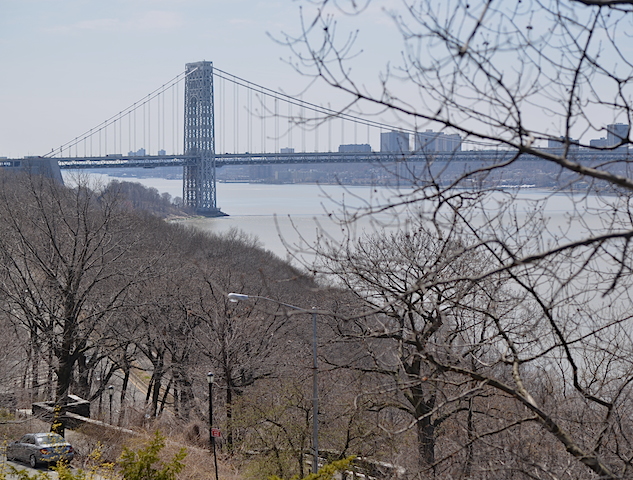
The Cloisters with its high tower was built specifically to house the art and architecture of medieval Europe. The buildings, rooms and colonnades were built with many rescued pieces from the original abbeys in France and Spain, including Benedictine monastery of Saint-Michel-del-Cuxa.
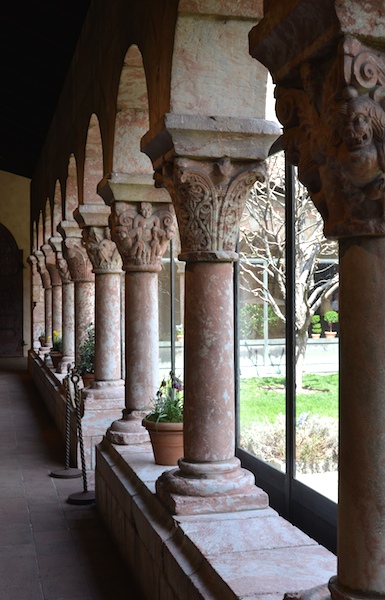
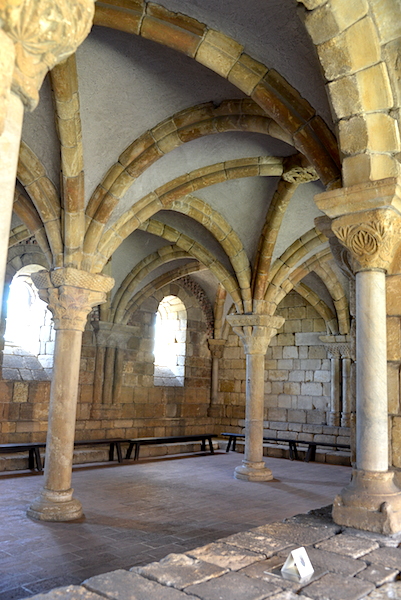 Inside are displays of masterpieces created during the medieval era. The nucleus of The Cloisters artwork is the George Grey Barnard Collection. Mr. Barnard was an American sculptor who had traveled extensively to France in search of medieval sculptures and architectural elements. He bought them from the descendants of people who had taken these abandoned objects during the French Revolution.
Inside are displays of masterpieces created during the medieval era. The nucleus of The Cloisters artwork is the George Grey Barnard Collection. Mr. Barnard was an American sculptor who had traveled extensively to France in search of medieval sculptures and architectural elements. He bought them from the descendants of people who had taken these abandoned objects during the French Revolution.
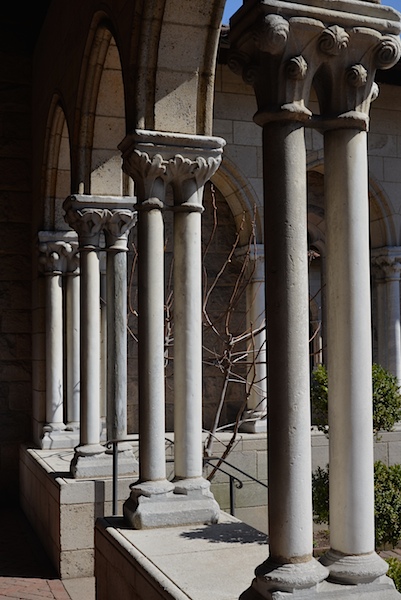 Every piece was carefully and artfully restored into a great masterpiece by the hands of a gothic specialist named Charles Collens. Mr. Collens was one of the partners of the famous Allen, Collens and Willis Architectural Firm. It is hard to imagine how each of the acquired pieces were shipped to New York, brought to the hilltop and pieced together into a grand masterpiece. The Cloisters was opened to the public in 1938.
Every piece was carefully and artfully restored into a great masterpiece by the hands of a gothic specialist named Charles Collens. Mr. Collens was one of the partners of the famous Allen, Collens and Willis Architectural Firm. It is hard to imagine how each of the acquired pieces were shipped to New York, brought to the hilltop and pieced together into a grand masterpiece. The Cloisters was opened to the public in 1938.
Twelfth and thirteenth century Spanish frescos, French sculpture, twelfth-century apse from the church of San Martin at Fuentiduena Spain, sculptures from Spain and Italy… and the famous Unicorn Tapestries Room filled with mystical unicorn tapestries from the 1500s.
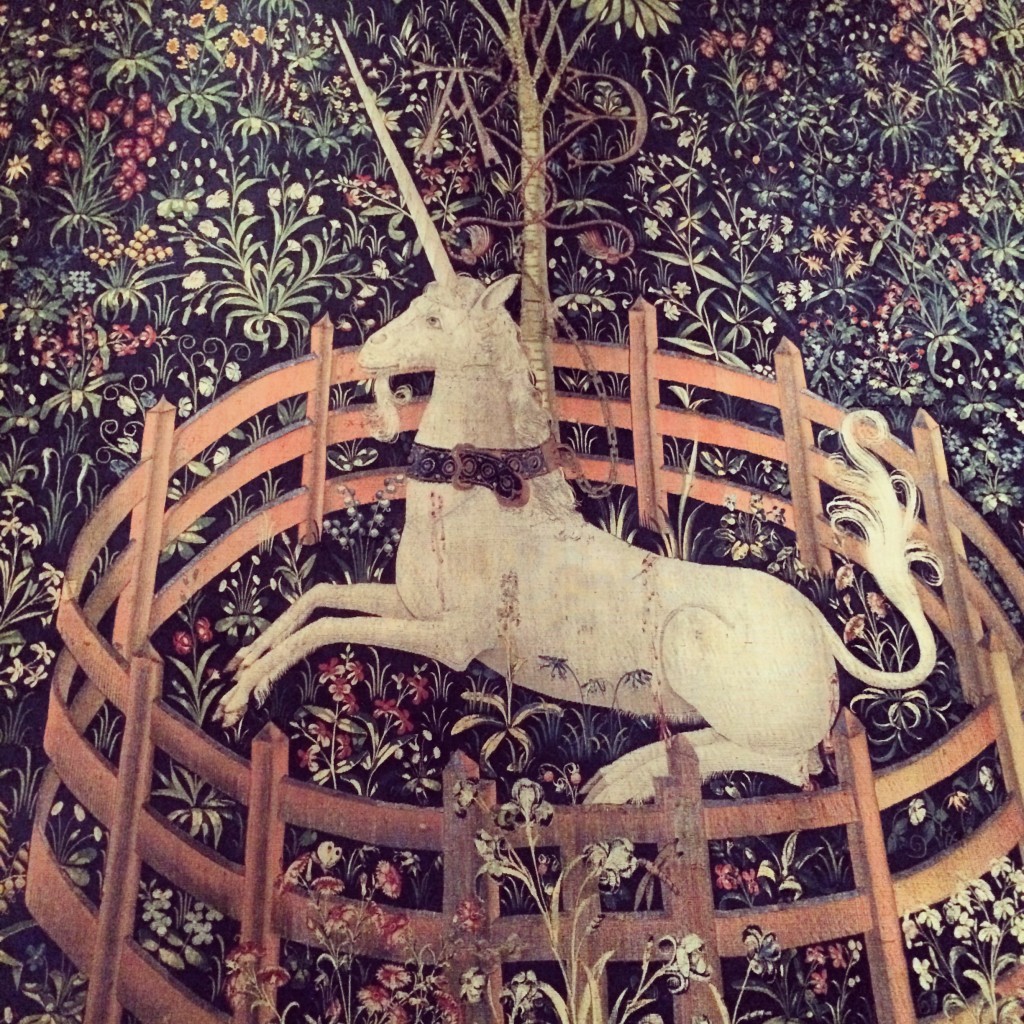
On this trip I was there for a rare treat. The Radiant Light: Stained Glass from Canterbury Cathedral at The Cloisters exhibition. It features six Romanesque period windows that have never left the cathedral since their creation in 1178-1180. The windows are from the clerestory of the cathedral’s choir, east transepts and Trinity Chapel.
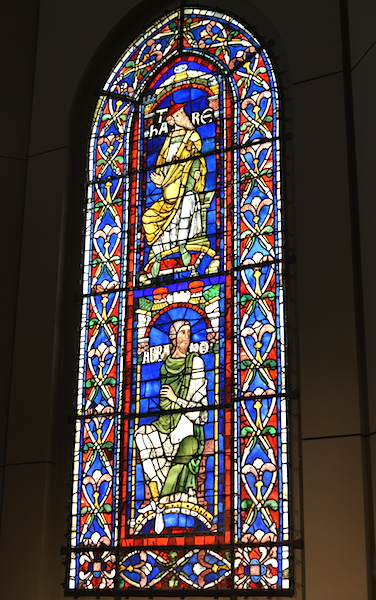
The Ancestors of Christ Windows at Canterbury Cathedral book by Jeffrey Weaver and Madeline H. Caviness recorded that 86 near life size figures of the male ancestors of Christ were at the cathedral’s choir and east transepts. Each with detailed painted faces and costumes dating back to the 12th century. They are the oldest and most famous medieval paintings found in England.
The six figures displayed at The Cloisters were Abraham and Thara, rising about twelve feet high and Lamech, Noah, Phalec and Jared. These were part of the original 86.
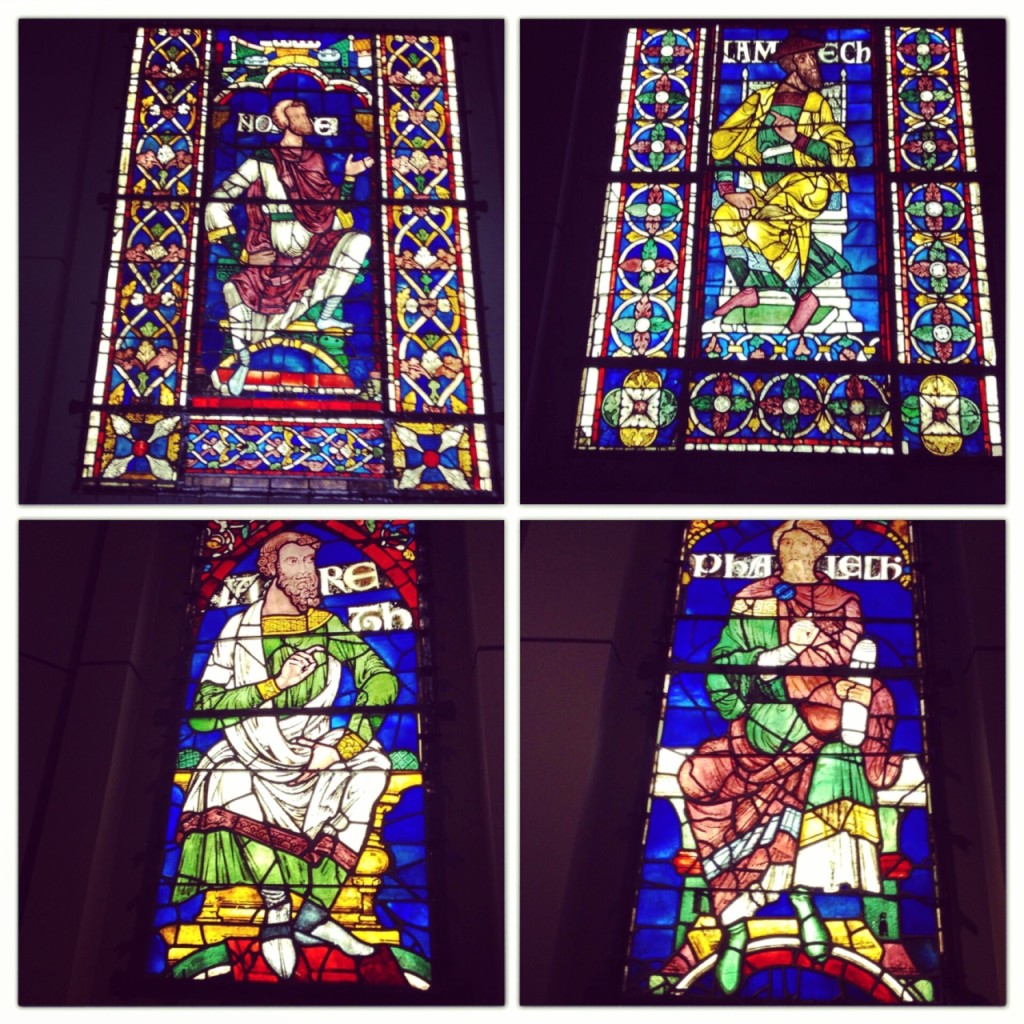 Noah in particular caught my attention. He was the son of Lamech, the father of Shem and the ninth generation after Adam. He looked upward probably looking at God and having a discussion with Him.
Noah in particular caught my attention. He was the son of Lamech, the father of Shem and the ninth generation after Adam. He looked upward probably looking at God and having a discussion with Him.
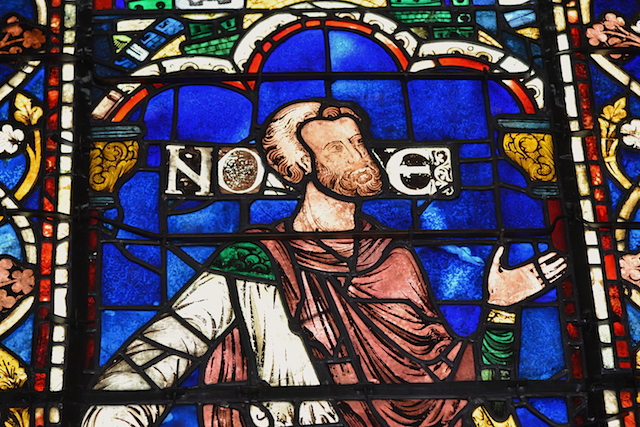
Lamech lived a long life of 969 years. He lived during the time when God was already showing his anger in mankind because of sinfulness. Thus the flood during Noah’s time to wipe out all mankind except those in the Ark. Lamech looked nervous and uneasy.
Stained glasses are found throughout The Cloisters. The Grisaille Panels from the Chateau de Boureuil, Normandy dated around 1265 (shown below) made with pot-metal, colorless glass with vitreous paint.

The Adoration of the Magi from Altenberg-an-der-Lahn, Hesse, Germany, dated 1290-1300 in The Early Gothic Hall:

The Gothic Chapel Gallery, a 13th century chapel with tall windows and 14th century Austrian stained glass from the church of Saint Leonhard in Carinthia and the castle chapel at Ebreichsdorf near Vienna (shown below).
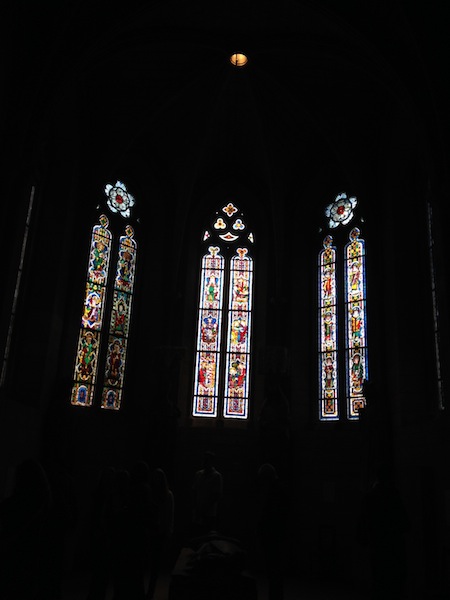
Silver-stained roundels from Rhineland and Netherlands…
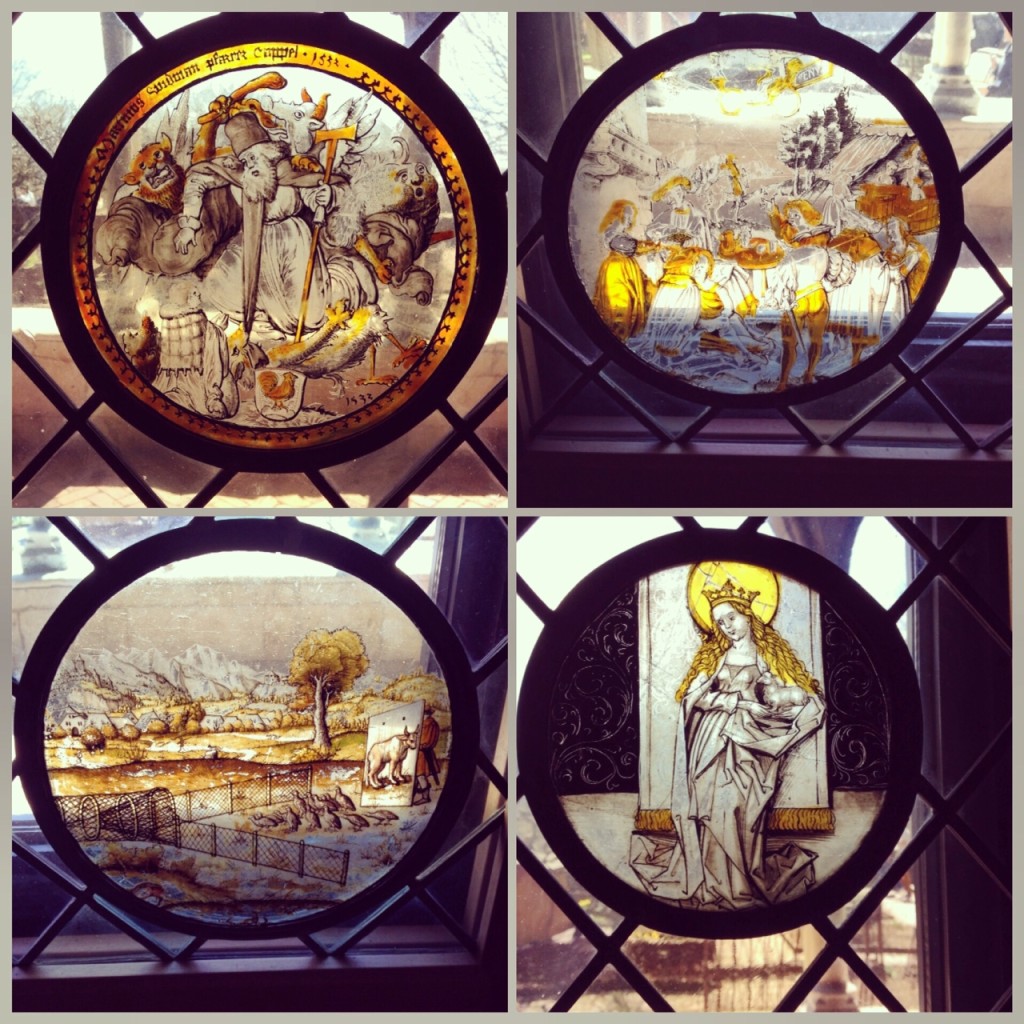
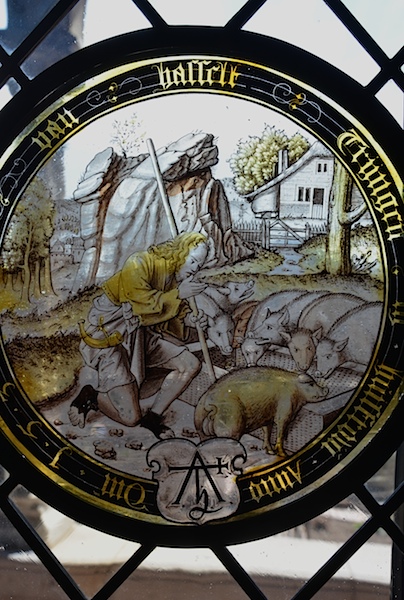
These roundels show life during the late medieval times with glimpses into the daily activities, beliefs and entertainment. They were created for domestic use across Europe and not all have religious connotation- showing the worldly part of life.
Read more:
Building Stories
Canterbury Cathedral
MET Museum
[…] Information: Cloisters […]
[WORDPRESS HASHCASH] The comment's actual post text did not contain your blog url (https://travelwritingpro.com/journey-photos-cloisters-museum-gardens) and so is spam.